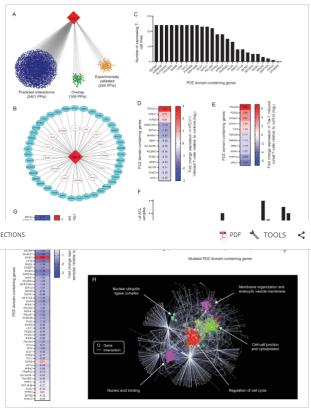
Extracellular vesicles (EVs) are known to facilitate infection by enveloped RNA viruses including the Human T-cell leukemia virus type-1 (HTLV-1). HTLV-1-encoded proteins, like the transactivator and oncoprotein Tax-1, are loaded into EVs but their precise impact on EV cargos is not yet known. Here, we report a comprehensive interaction map between Tax-1 and the human PDZ (PSD95/DLG/ZO-1) proteins that regulate EVs formation and composition. We show that Tax-1 interacts with more than one-third of hPDZome components, including proteins involved in cell cycle, cell–cell junctions, cytoskeleton organization and membrane complex assembly. We extensively characterized Tax-1 interaction with syntenin-1, an evolutionary conserved PDZ hub that controls EV biogenesis. Using nuclear magnetic resonance (NMR) spectroscopy, we have determined the structural basis of the interaction between the C-terminal PDZ binding motif of Tax-1, and two PDZ domains of syntenin-1. Importantly, we show that a small molecule able to inhibit HTLV-1 cell-to-cell transmission breaks the Tax-1/syntenin-1 interaction, impacts the levels of syntenin-1 and viral proteins in EVs, and shifts the EV composition toward cellular antiviral proteins and microRNAs, including the miR-320 family. Consequently, we demonstrate that mimics of miR-320c, encapsulated into EVs, have antiviral activities with a potential to be used against HTLV-1 induced diseases.
Link to Publisher’s page: Inhibitors of Tax1‐PDZ Interactions Block HTLV‐1 Viral Transmission by Changing EV Composition - Puttemans - 2025 - Journal of Extracellular Vesicles - Wiley Online Library
